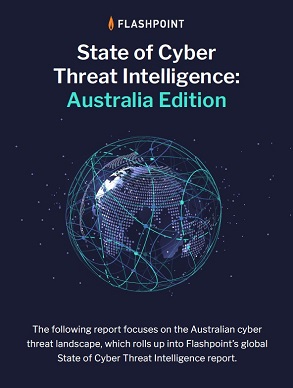
 Flashpoint has released a new report, State of Cyber Threat Intelligence: Australia Edition, detailing the state of Australia’s cyber threat intelligence and an analysis of emerging security and intelligence trends impacting organisations across the public and private sectors.
Flashpoint has released a new report, State of Cyber Threat Intelligence: Australia Edition, detailing the state of Australia’s cyber threat intelligence and an analysis of emerging security and intelligence trends impacting organisations across the public and private sectors.
Following international trends outlined in Flashpoint’s global State of Cyber Threat Intelligence Report, the Australian report showed Australia’s Media and Telecommunications division was victim to an enormous 72 per cent of Australia’s 50 million stolen credentials – a 99 per cent increase when compared to 2021, while the Australian Public Sector accounted for nearly 20 per cent of the country’s total data breaches.
The global report has highlighted the resiliency of threat actors and illicit communities and markets, which continue to re-emerge despite takedowns. Flashpoint’s intelligence collection observed 190 new significant illicit marketplaces emerge in 2022 alone, with indications the trajectory will continue.
2022 was a prolific year of cyberattacks in Australia, with a record number of breaches reported when compared to previous years. Flashpoint identified a record 56 successful ransomware attacks alone aimed at Australian organisations.
Fraud and phishing campaigns remain one of the more commonly used methods employed by threat-actors, however, ransomware attacks are increasingly used by advanced persistent threat (APT) groups such as those highlighted by the turning point attacks on Optus and Medibank.
Flashpoint tracked specific illicit market discussions that involved the trade, purchase, sale, or general procurement of exploit code, ranging in price from AUD $3,000 to more than $15,000. Flashpoint’s data also indicated threat actor focus is on obtaining email addresses and account credentials, however, all personally identifiable information (PII) is at risk of being exfiltrated for financial gain.
Poor cybersecurity practices exacerbated by the rapid shift to remote and hybrid work, in addition to the targeting of APT groups from China and Russia, is a key factor in the drastic increase in exposed Australian records.
2022’s cyber incidents have spurred the recent announcement of the government’s intention to appoint a Coordinator for Cyber Security, and Australia now ranking first among global peers for cyber progress. These changes are timely as Flashpoint’s report indicates attacks are on track to increase further in 2023.
Senior Intelligence Analyst and Team Lead APAC/EMEA for Flashpoint, Ben Gestier, says there has never been a more pressing need for an all-hands on deck approach to cybercrime. A sentiment in line with Prime Minister Anthony Albanese announcing that ‘strengthening Australia’s cybersecurity is a fundamental priority’.
“Security and intelligence teams responsible for protecting their assets, data, and infrastructure must resist identifying and mitigating cyber threats in a silo,” says Gestier. “A nation’s risk landscape is too volatile and complex for a single business or government to decipher in full. An all-encompassing view of risk is needed to shore up defences and mitigate attacks when they occur.”
You can read the full report here.





